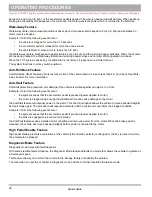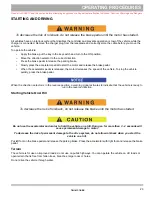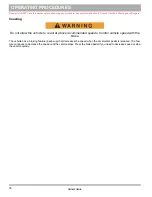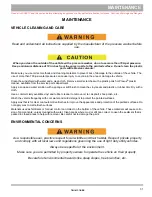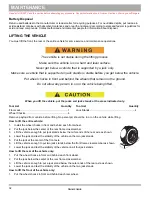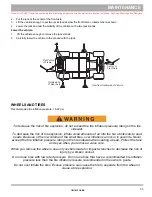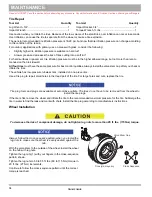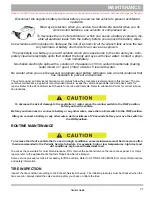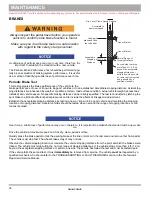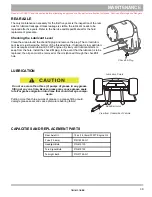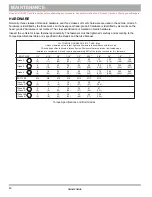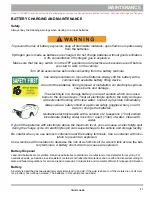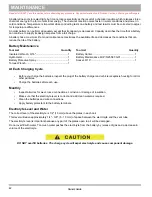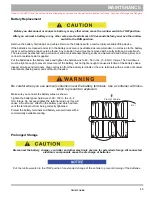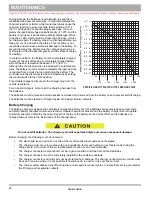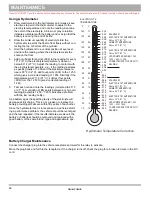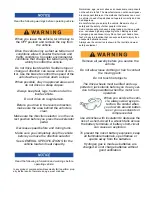
B
MAINTENANCE
Read all of SAFETY and this section before attempting any procedure. Pay particular attention to Notices, Cautions, Warnings and Dangers.
41
Owner’s Guide
BATTERY CHARGING AND MAINTENANCE
Safety
Always obey the following warnings when working on or near batteries.
To prevent the risk of battery explosion, keep all flammable materials, open flames or sparks away
from the batteries.
Hydrogen gas is made as batteries are charged. Do not charge batteries without good ventilation.
A 4% concentration of hydrogen gas is explosive.
Make sure that the key switch is in the OFF position and all electrical accessories are off before
you start to work on the vehicle.
Turn off all accessories before disconnecting from the battery terminal.
Use safe procedures to move the batteries. Always lift the battery with a
commercially available battery lifting device.
Do not tilt the batteries during removal or installation. An electrolyte spill can
cause burns and damage.
The electrolyte in a storage battery is an acid solution which can cause
burns to the skin and eyes. Treat all electrolyte spills to the body and eyes
with extended flushing with clear water. Contact a physician immediately.
Always wear a safety shield or approved safety goggles when you add
water or charge the batteries.
Neutralize electrolyte spills with a solution of 2 teaspoons (10 ml) sodium
bicarbonate (baking soda) mixed in 1 quart (1 liter) of water. Clean with
water.
If you fill the batteries with electrolyte above the maximum level, you can cause an electrolyte spill
during the charge cycle. An electrolyte spill can cause damage to the vehicle and storage facility.
Be careful when you use aerosol containers near the battery terminals. Use a container with insu-
lation to prevent an explosion.
Use wrenches with insulation to decrease the risk of a short-circuit if a wrench falls across the bat-
tery terminals. A battery short-circuit can cause an explosion.
Battery Disposal
Lead-acid batteries are recyclable. Return used batteries to distributor, manufacturer or lead smelter for recycling. For
neutralized spills, put residue in acid-resistant containers with absorbent material, sand or earth and discard according to
state and federal regulations for acid and lead compounds. Contact state environmental officials for disposal information.
Battery
A battery is described as two dissimilar metals immersed in an acid. If the acid is absent or if the metals are not dissimi-
lar, a battery has not been created. The batteries in this vehicle are lead acid.
Summary of Contents for Hauler 800XE
Page 1: ...OWNER S GUIDE 642988 B HAULER 800XE REVISED FEBRUARY 2016 ISSUED FEBRUARY 2015...
Page 61: ......
Page 62: ......


